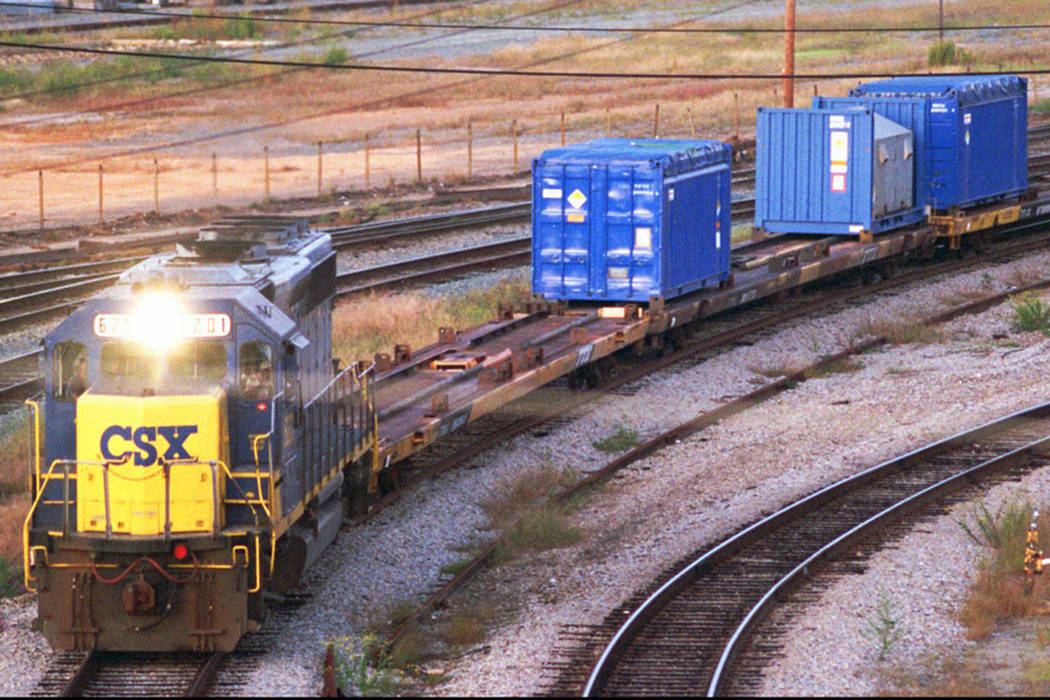Nevada House Democrats draw lines on plutonium, Yucca
WASHINGTON — Nevada Democrats in the House are seeking to use the appropriations process to block future Department of Energy transfers of plutonium to the state as well as administration efforts to jump start licensing hearings to open the Yucca Mountain nuclear waste repository.
The effort led Monday by Reps. Dina Titus, Susie Lee and Steven Horsford comes as Sen. Catherine Cortez Masto, D-Nev., prepares to question Energy Secretary Rick Perry about those issues in a Senate Energy and Natural Resources Committee hearing Tuesday.
Nevada Democrats are asking the top two officials on the House Appropriations Subcommittee on Energy and Water — Chairwoman Marcy Kaptur, D-Ohio, and ranking Republican Rep. Michael Simpson of Idaho — to include language in the fiscal 2020 spending bill to prohibit future plutonium transfers to the Nevada National Security Site along with any funding for Yucca Mountain.
In commentary published in Review-Journal on Sunday, Cortez Masto and Titus said “we will not stand idly by while Washington bureaucrats ship radioactive materials straight through our neighborhoods.”
“And we will fight any plan to store dangerous nuclear waste in a facility that sits on a seismically unsafe site and potentially threatens our water supply,” Cortez Masto and Titus wrote.
Congress in 1987 designated Yucca Mountain as the nation’s sole site for permanent storage of nuclear waste produced by power plants and Navy ships. But the process to license and develop the facility for storage has been blocked by political opposition for the past 30 years.
Consequently, nuclear waste is being stockpiled at 39 sites in states nationwide.
Perry told Congress last week that failure of the federal government to take possession and store the waste is costing $2 million a day in fines and fees.
Sen. Lamar Alexander, R-Tenn., the chairman of the Senate Appropriations energy subcommittee, is seeking legislative changes to allow interim storage of waste until a permanent repository can be built. He wants a decision this year on whether to continue to pursue construction of the Yucca Mountain facility.
Meanwhile, the Energy Department last year was ordered by a federal court in South Carolina to move one metric ton of weapons-grade plutonium out of the Savannah River Site.
A half ton was shipped to the Nevada security site as the state was preparing a federal court filing seeking an injunction to stop the shipment. The National Nuclear Security Administration said it was not planning future transfers of plutonium to Nevada.
But Titus said the Energy Department is required by the federal court to move an additional 5 metric tons out of South Carolina in future years, and because of the last shipment, she wants legislation to prohibit another.
Nevada lawmakers want language in the bill that would block funds for fiscal 2020 for the “transfer, disposal or storage of plutonium from the Savannah River Site located in the state of South Carolina to the Nevada National Security Site located in the state of Nevada.”
The lawmakers also want the subcommittee to block use of any funds to open Yucca Mountain, noting Energy Department estimates that $82 billion would be needed to complete the project, with transportation of radioactive waste traveling through 330 congressional districts, “including your own.”
Last week, the Defense Nuclear Facilities Safety Board issued a report that pointed out safety risks to workers and the “offsite public” due to seismic hazards to structures at the Device Assembly Facility at NNSS, located about 90 miles north of Las Vegas.
The Device Assembly Facility is where the plutonium shipped from South Carolina is being stored until it can be transferred eventually to an Energy Department laboratory at Los Alamos, New Mexico.
“This facility continues to operate without accounting for the increase in seismic hazard and without evaluating whether the credited structures, systems and components can perform their safety function during and after a seismic event,” wrote Bruce Hamilton, chairman of the Defense Nuclear Facilities Safety Board, about the Nevada structure.
Nevada officials are well aware of the seismic activity in the region.
The most recent U.S. Geological Survey, in 2008, lists the area that includes the Nevada security site and nearby Yucca Mountain as one of moderate to high seismic hazard.
Two faults, the Northern Death Valley and the Black Mountains, are located near the Nevada security site and the proposed nuclear waste storage facility.
According to the USGS, one of the strongest recent earthquakes in the state occurred on June 29, 1992 at Little Skull Mountain in the southwest portion of the Nevada security site and about 12 miles west of Yucca Mountain.
The earthquake registered magnitude 5.6.
The Defense Nuclear Facilities Safety Board, an independent organization that reviews public health and safety issues at the Energy Department’s nuclear defense facilities, said concerns about seismic hazards at the Device Assembly Facility in Nevada were first raised in 2007.
And the report noted that facility has “high explosives co-located with special nuclear material.”
Without improvements to structures and components, the facility may no longer be able to withstand the increased seismic hazards identified in 2007, the report noted.
An Energy Department safety analysis cited in the report notes that the department finds the structure, blast doors, blast valves and its fire suppression system would significantly reduce release of material.
Contact Gary Martin at gmartin@reviewjournal.com or 202-662-7390. Follow @garymartindc on Twitter.


















